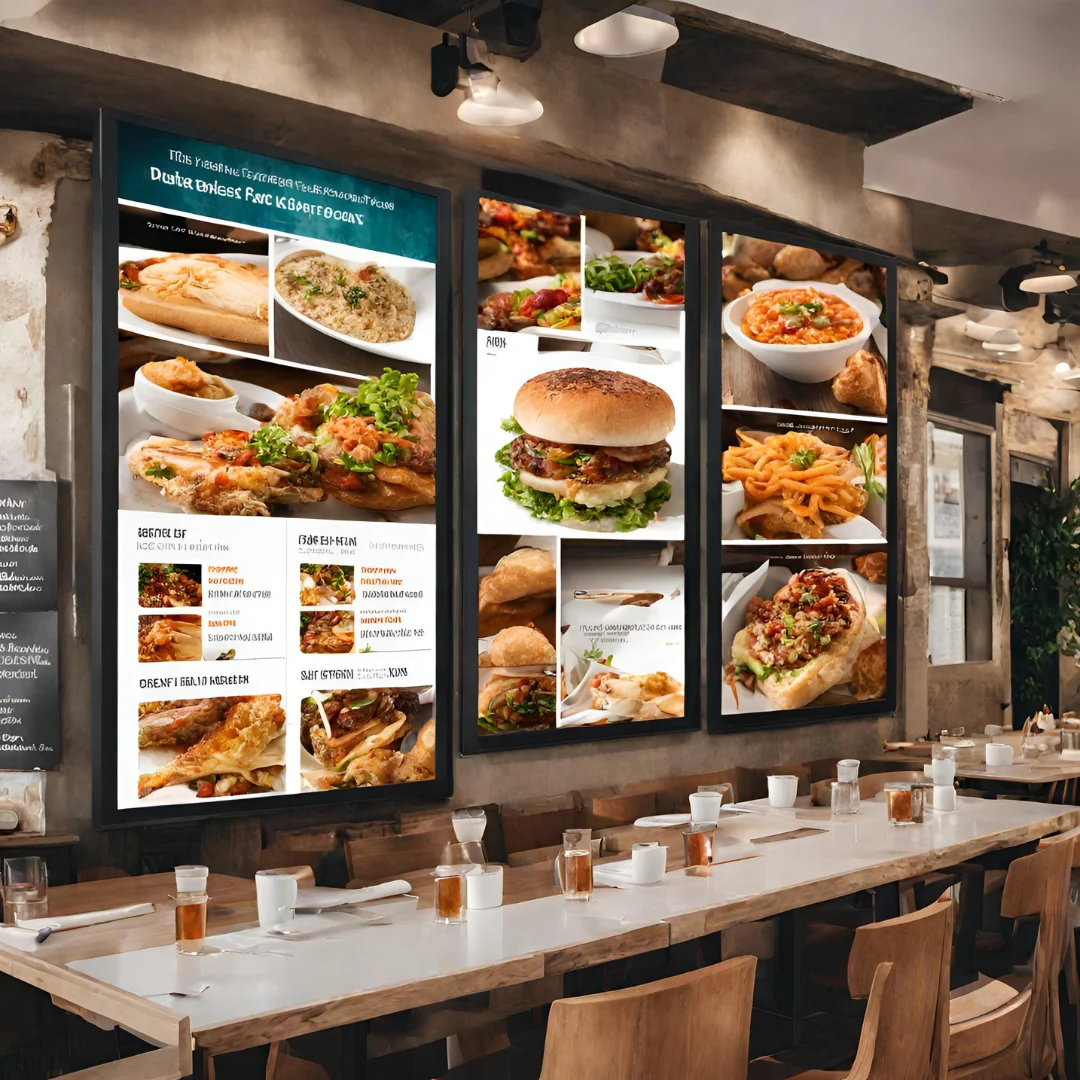This high-speed world, with short attention spans and intense competition, necessitates nothing but innovation for businesses to be able to hold and sustain customer attention. One such effective measure taken by business owners is indoor menu boards and displays. The digital marvels are truly revolutionizing one industry after the other, with the most conspicuous signs of a revolution happening in food service and retail. Continue reading to find out how indoor menu boards and displays are changing the traditional way of customer interaction.
Engaging and Interactive Material:
Indoor menu boards and displays deploy high-definition screens that display dynamic, visually appetizing content. Digital displays can flash an animation or video with vivid images and nothing like a traditional static sign, making customers notice a store. Dynamic content attracts more than static content and also helps businesses to advertise their products more appealingly and attractively. For example, one can display a hot dish or a cool drink in a restaurant, motivating the customers to buy them.
Add Flexibility and Real-time Updates:
Probably the most critical benefit of digital signage boards is that they can be used to edit content in real-time. This affords maximum flexibility for businesses that alter their offerings even daily, things like special offers, which might only be suitable for a limited period; or changes with the season. Everything can be updated in just a few clicks, right across multiple locations. This capability helps to bring down the costs and waste associated with printing new menus. Further, it helps make real-time updates based on the inventory level or customer review.
Enhanced Customer Experience:
Indoor menu boards and displays provide a way for the customer to understand the landscape of an operation more efficiently. Sharp, orderly displays speed up the time spent for those customers who can never decide. Popular items, current specials, or bundle solutions drive customer behavior toward decisions in fewer minutes, contributing to less wait time and enhanced satisfaction. In addition, it is possible to use digital displays to show other details: nutritional values, allergens, or sources of ingredients, thereby meeting the interest growth associated with information about foods and products in general.
Upselling and Cross-Selling:
For instance, digital menu boards provide robust cross-selling and upselling opportunities when pricey margin items, upsold add-ons, or bundled offers are placed in strategic, high-visibility areas. For example, a breakfast combo deal would be emphasized at a coffee shop near their best-selling coffee to encourage customers to spend more. And because all of these tactics can be tracked and modulated in real-time using data analytics, these kinds of strategies are so much more effective.
Cheaper and Eco-Friendly:
Yes, it is a substantive investment into menu boards and displays, but in the longer term, the benefits are more than what is outlaid in costs. This practice saves a business money on static menus and promotional material printings. Another plus for the use of digital displays is that they are eco-friendly. That is, over time, efficiency and savings will amount to a positive return on investment from new technology.
Customization and Branding:
Unmatched customization and branding opportunities: These signboards allow businesses to customize their look and feel by using specific color schemes, fonts, and imagery to match their brand image. All this consistency, in turn, goes towards branding and brand recognition. The same content may further be localized to highlight certain aspects per the preferences or needs of a particular type of customer demographic, thereby providing relevance to the offerings.
Human Machine Interface:
Digital signage is changing the game with integrated digital menu boards and other technologies. For example, integration with point-of-sale systems will help streamline operations and ensure that the updated pricing and availability of items are adhered to. Interactive screens can allow customers to see through: search or even place orders and transact right on the same screen. All those tech-savvy solutions tend not only to foster the customer experience but also to improve operational efficiency as a result.
In-restaurant menu boards and signs do more than just replace old paper-and-print signage with digital ones; they entirely transform how customer experiences are improved, efficiency drives operation, and sales empowerment is accomplished.





